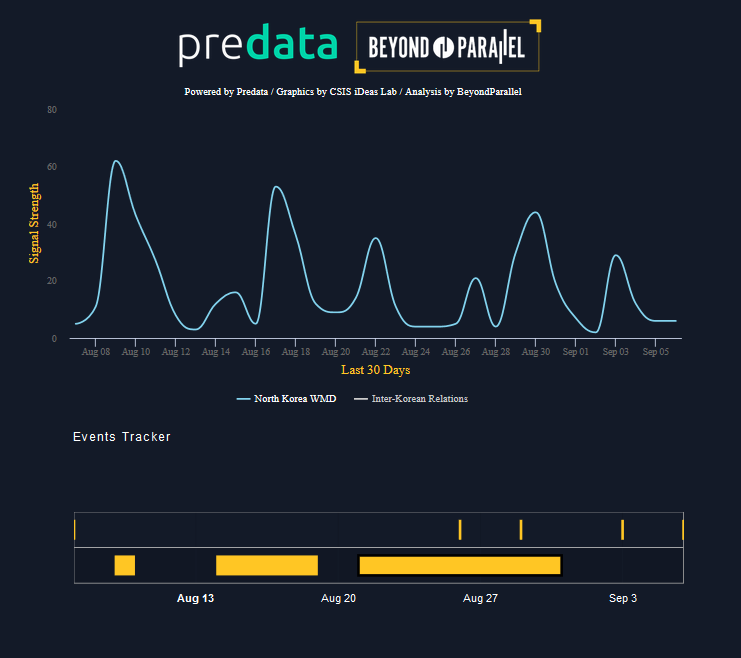
North Korean Missile Tests Possible Before September Ends
On September 7, predictive signals by Predata/CSIS Beyond Parallel indicate there is a significantly elevated chance of a North Korean missile test in the next 14 days. The underlying signal has been breaching its highest levels each day since August 31, reaching its highest level in 102 days on September 5 and exceeding its 30-day trailing average by 2.5 standard deviations. The signal continued to show significant overnight increases through September 6.
These signal predictions are corroborated by other Beyond Parallel empirical studies of North Korean behavior and events on the Korean peninsula.
In context of the recent events in the region and North Korea’s track record of provocations this year, the signal comports with a concerning strong upward trend. On September 3, North Korea conducted its sixth nuclear test which North Korean state media announced was of a hydrogen bomb that could fit on the top of an intercontinental ballistic missile (ICBM). This follows only a few days after a North Korean test of an intermediate-range ballistic missile (the Hwasong-12) in August which overflew Japan and a little over a month after the test of a Hwasong-14 ICBM.
In addition to these signals, September 9 marks the 69th anniversary of North Korea’s Foundation Day (조선민주주의인민공화국 창건일). September 9 is also the one-year anniversary of North Korea’s fifth nuclear test. At an estimated 10 kilotons, that nuclear device had been the largest North Korea had detonated to date and, according to North Korea’s state media at the time, was a size compatible with being mounted on ballistic missiles.
Several news media this week have reported that South Korea’s National Intelligence Service (NIS) briefed South Korean lawmakers on Monday that they have detected possible movement in North Korea of an ICBM. Many expect that, unlike North Korea’s most recent tests, the next text would likely be conducted along a standard trajectory rather than a lofted one. 
Click here for Interactive Signals.

